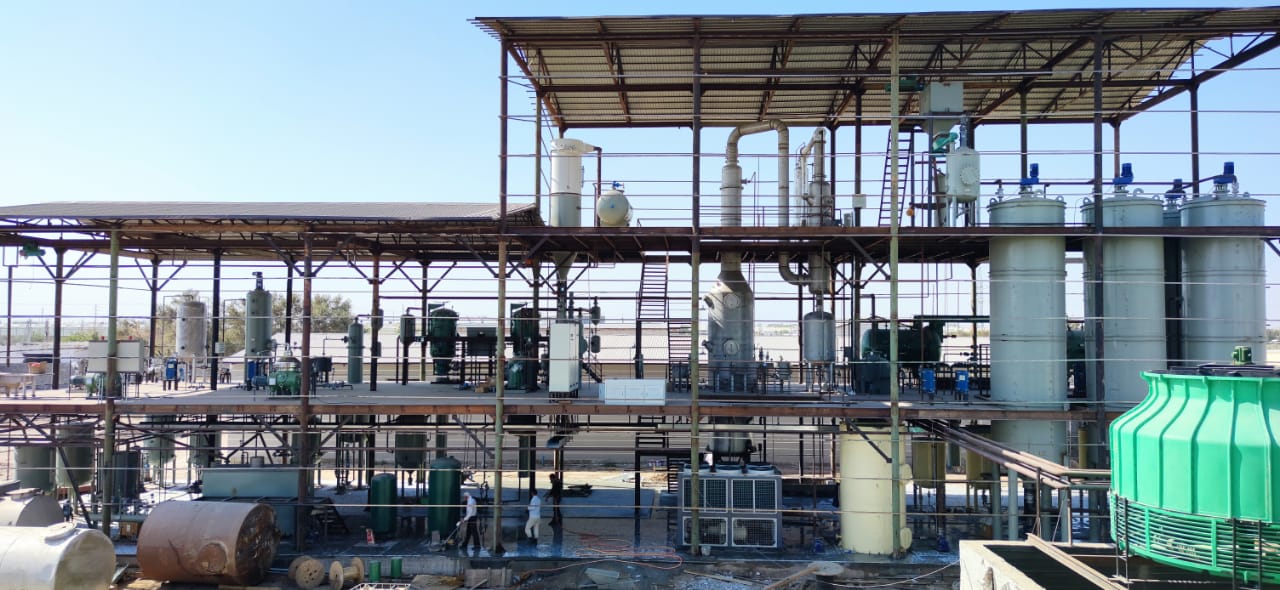
Today, we're going to embark on an exciting journey to uncover the intricate production process of soybean oil. As a leading player in the industry, our company adheres to strict quality control and sustainable development principles, ensuring that every drop of soybean oil meets the highest standards.
The production of soybean oil starts with the careful selection and cleaning of soybeans. Our company sources high - quality soybeans from trusted suppliers around the world. In this initial stage, we use advanced cleaning equipment to remove impurities such as dirt, stones, and broken beans. For example, a large - scale cleaning machine can process up to 50 tons of soybeans per day, ensuring that only the purest soybeans enter the next stage of production.

After cleaning, the soybeans are crushed and dehulled. This step is crucial as it increases the surface area of the soybeans, making it easier to extract the oil. Specialized crushers can break the soybeans into smaller pieces, and then dehulling machines separate the hulls from the cotyledons. On average, about 8% of the weight of the soybeans is removed as hulls during this process.
Next, the crushed soybeans are conditioned to adjust their moisture content and temperature. This step prepares the soybeans for flaking. Flaking machines press the soybeans into thin flakes, which further facilitates oil extraction. The ideal moisture content for flaking is around 10 - 12%, and the temperature is carefully controlled between 60 - 70°C.
The heart of the soybean oil production process is oil extraction. Our company uses state - of - the - art extraction technology, such as solvent extraction. In this process, a food - grade solvent is used to dissolve the oil from the soybean flakes. Approximately 1.5 - 2 liters of solvent are used per kilogram of soybean flakes, and the extraction efficiency can reach up to 98%.

After extraction, the oil undergoes a series of refining steps. Desolventizing removes the remaining solvent from the oil. Degumming removes phosphatides, which can cause cloudiness in the oil. Neutralization reduces the free fatty acid content. Bleaching removes pigments and other impurities, and deodorization eliminates unpleasant odors. Winterization is the final step, which removes waxes and other substances that may cause the oil to solidify at low temperatures. Through these meticulous steps, we ensure that our soybean oil has a high quality and long shelf - life.
Soybean oil production also generates valuable by - products. The soybean meal left after oil extraction is a high - protein feed ingredient, widely used in the livestock and poultry industry. In addition, the hulls can be used as a source of fiber in animal feed or as a biofuel, demonstrating our company's commitment to sustainable development.

In conclusion, the production of soybean oil is a complex and professional process. Our company's strict quality control, advanced technology, and commitment to environmental protection ensure that we can provide high - quality soybean oil and its by - products to global customers. Are you interested in learning more about our soybean oil products or discussing potential cooperation? Leave your thoughts in the comments below!
Ready to source high - quality soybean oil for your business? Contact us now and experience the excellence of our products!


